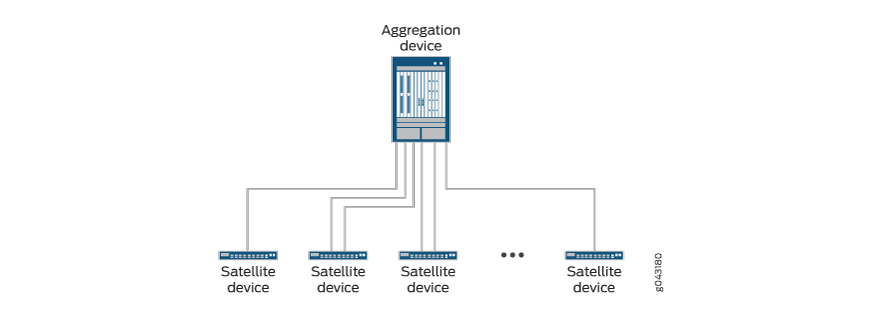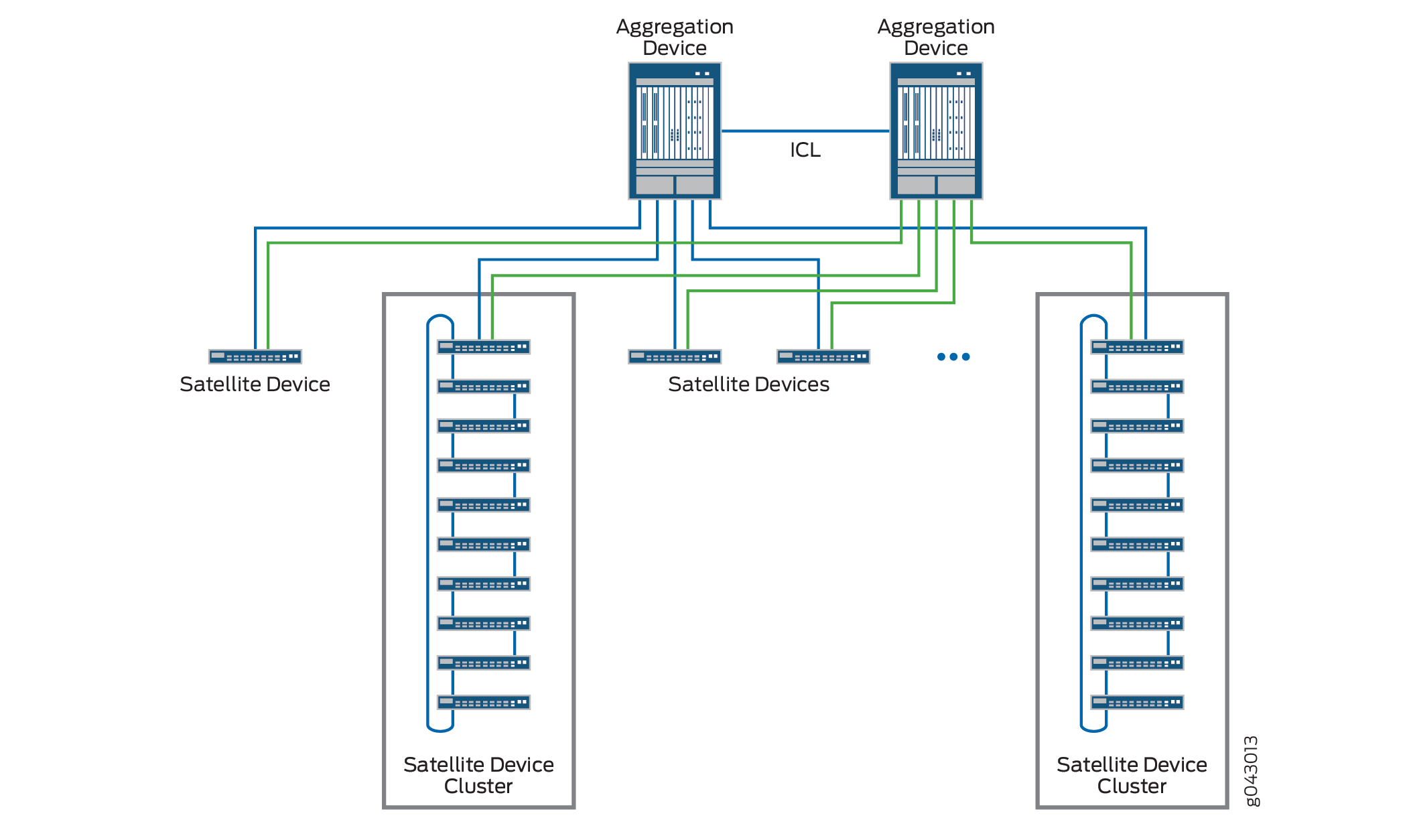Junos Fusion Enterprise Overview
Junos Fusion provides a method of significantly expanding the number of available network interfaces on a device—called an aggregation device—by allowing the aggregation device to add interfaces through interconnections with satellite devices. The entire system—the interconnected aggregation device and satellite devices—is called a Junos Fusion. A Junos Fusion simplifies network topologies and administration because it appears to the larger network as a single, port-dense device that is managed using one IP address.
Junos Fusion Enterprise brings the Junos Fusion technology to enterprise switching networks. In a Junos Fusion Enterprise, EX9200 switches act as aggregation devices while EX2300, EX3400, EX4300 or QFX5100 switches act as satellite devices.
Junos Fusion Enterprise provides the following benefits:
Hides the complexity of managing a large campus network with a single point of management for up to 6,000 ports or 128 switches.
Reduces operational costs with plug-and-play provisioning of access devices.
Easy to scale by adding satellite devices for additional ports.
In a Junos Fusion Enterprise, each satellite device has at least one connection to the aggregation device. The aggregation device acts as the single point of management for all devices in the Junos Fusion Enterprise. The satellite devices provide network interfaces that send and receive network traffic.
Figure 1 provides an illustration of a basic Junos Fusion Enterprise topology.

Junos Fusion Enterprise supports up to two aggregation devices that can be multi-homed to each satellite device, as well as satellite device clustering, which allows multiple satellite devices to be clustered into a group and cabled into the Junos Fusion as a group instead of as individual satellite devices. A Junos Fusion Enterprise using two aggregation devices uses the ICCP protocol from MC-LAG to connect and maintain the Junos Fusion topology.
Figure 2 illustrates an example of a more complex Junos Fusion Enterprise topology. This dual-aggregation topology includes both standalone and clustered satellite devices. The aggregation devices are multi-homed to each standalone satellite device and to each satellite device cluster.

An EX9200 switch acting as an aggregation device in a Junos Fusion Enterprise is responsible for almost all management tasks, including interface configuration for every satellite device interface in the topology. The aggregation device runs Junos OS software for the entire Junos Fusion Enterprise, and the network-facing interfaces on the satellite devices—called extended ports—are configured from the aggregation device and support features that are supported by the version of Junos OS running on the aggregation device.
The satellite devices and the aggregation device maintain the control plane for the Junos Fusion Enterprise using multiple internal satellite management protocols. Network traffic can be forwarded between satellite devices through the aggregation device. Junos Fusion Enterprise supports the IEEE 802.1BR standard.
Junos Fusion Enterprise provides the following benefits:
Simplified network topology—You can combine multiple devices into a topology that appears to the larger network as a single device, and then manage the device from a single IP address.
Port density—You can configure a large number of network-facing interfaces into a topology that operates as a single network device.
Manageability—You can manage a Junos Fusion that supports a large number of network-facing interfaces from a single point. The single point of management, the aggregation device, runs Junos OS software for the entire Junos Fusion.
Flexibility—You can easily expand the size of your Junos Fusion by adding satellite devices to the Junos Fusion as your networking needs grow.
Investment protection—In environments that need to expand because the capabilities of the existing hardware are maximized, a Junos Fusion can be a logical upgrade option because it enables the network to evolve with minimal disruption to the existing network and without having to remove the existing, previously purchased devices from the network.
